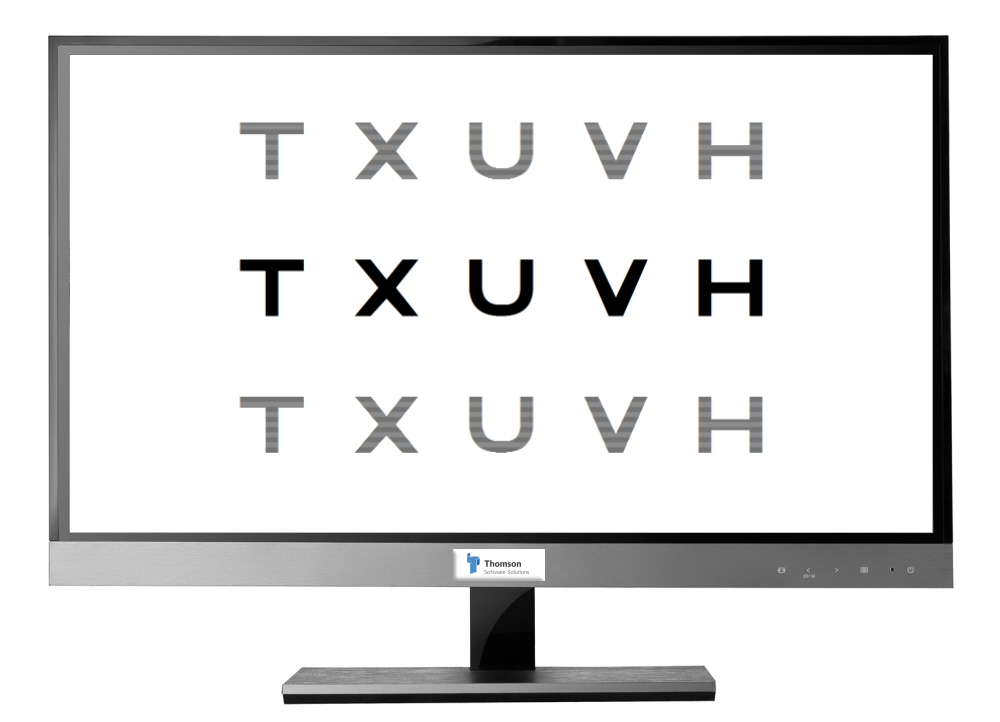Most of the major monitor manufacturers now produce a range of flat panel displays. Most are suitable for use with Test Chart 2016 although you should check the following:
Size: Test Chart 2016 can be used with a monitor of any size. However, the larger the monitor, the larger the letters that may be displayed on it. Other factors to take into account are:
Over the past decade, the price of large displays has fallen dramatically and it is generally recommended that you choose the largest monitor that your budget will allow.
Note: If you wish to make use of the polarised mask option supported by Test Chart 2016 , you will require a 24’’ widescreen display. Please contact Thomson Software Solutions for advice on suitable monitors.
Resolution: Since the pixel size on flat panel displays is fixed, the resolution is largely determined by the size of the display. Most 19’’ displays have a resolution of 1280 x 1024 etc.
Viewing Angle: Modern flat panel displays have very wide viewing angles (i.e. the luminance remains constant from a wide range of viewing angles). In the consulting room the display will be viewed from at least 3 metres so this is not a major consideration.
Screen luminance and contrast: Most flat panel displays are capable of producing luminances of 150 cdm-2 or more and contrasts in excess of 200:1. This is perfectly adequate for displaying test charts.
Screen uniformity. Flat panel displays generally have very uniform luminance across the screen and are very stable over time - much better than the average projector chart!
Polarisation. A range of clinical quality polarised monitors are available from Thomson Software Solutions. These monitors allow targets to be presented to each eye separately on the screen. Test Chart 2016 contains a wide range of tests which exploit this polarised technology. Please contact Thomson Software Solutions for further details.

27'' Clinical-quality polarised monitor available from Thomson Software Solutions
IMPORTANT
If you want to mount the flat panel display directly on the wall (the neatest solution) check the following: